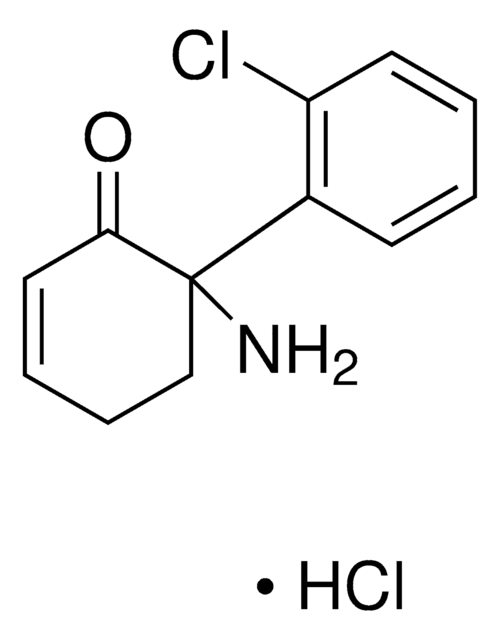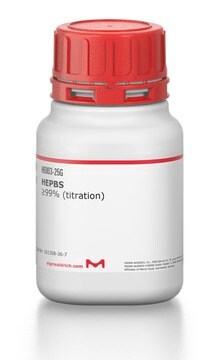E0276
EPPS
BioPerformance Certified, suitable for cell culture, ≥99.5% (titration)
Sinônimo(s):
4-(2-Hydroxyethyl)-1-piperazinepropanesulfonic acid, 4-(2-Hydroxyethyl)piperazine-1-propanesulfonic acid, N-(2-Hydroxyethyl)piperazine-N′-(3-propanesulfonic acid), HEPPS
About This Item
Produtos recomendados
grau
BioPerformance Certified
Nível de qualidade
Ensaio
≥99.5% (titration)
Formulário
crystalline powder
técnica(s)
cell culture | mammalian: suitable
Impurezas
endotoxin and Total Aerobic Microbial Count, tested
pH
7.3-8.7
faixa de pH útil
7.3-8.7
pKa (25 °C)
8.0
pKa
8
pf
237-239 °C (lit.)
solubilidade
H2O: 25 g + 50 mL, clear, colorless
traços de cátion
heavy metals (as Pb): ≤5 ppm
λmax
A290 at ≤0.1 (C=33% w/w)
aplicação(ões)
diagnostic assay manufacturing
cadeia de caracteres SMILES
OCCN1CCN(CCCS(O)(=O)=O)CC1
InChI
1S/C9H20N2O4S/c12-8-7-11-5-3-10(4-6-11)2-1-9-16(13,14)15/h12H,1-9H2,(H,13,14,15)
chave InChI
OWXMKDGYPWMGEB-UHFFFAOYSA-N
Procurando produtos similares? Visita Guia de comparação de produtos
Descrição geral
Aplicação
Características e benefícios
- BioPerformance Certified, high-quality level (400), ensures reliable and consistent results.
- Suitable for mammalian cell culture techniques
Código de classe de armazenamento
11 - Combustible Solids
Classe de risco de água (WGK)
WGK 3
Ponto de fulgor (°F)
Not applicable
Ponto de fulgor (°C)
Not applicable
Equipamento de proteção individual
Eyeshields, Gloves, type N95 (US)
Escolha uma das versões mais recentes:
Já possui este produto?
Encontre a documentação dos produtos que você adquiriu recentemente na biblioteca de documentos.
Nossa equipe de cientistas tem experiência em todas as áreas de pesquisa, incluindo Life Sciences, ciência de materiais, síntese química, cromatografia, química analítica e muitas outras.
Entre em contato com a assistência técnica





